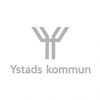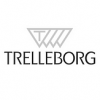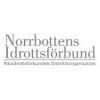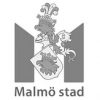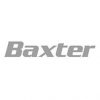Monica Sandgren, Head of Internal Communication (SBAB) and Pierre Du Rietz, Managing Director (Web Service Awards), discussed the intranet’s role in the modern organization based on technical and cultural conditions.
In a panel debate, the participants talked about the importance of a holistic perspective and collaboration between departments, such as IT, HR and Communications, to drive successful intranets.
On the one hand, a collaboration between these actors generates good conditions for gathering strategies, technical infrastructures and shared goals, but above all, for creating the best conditions for employees by finding out what they need in terms of communication, training, and functionality and information.
Success factors for driving employee engagement
Historically, internal communication is driven by communication departments and dedicated editors responsible for ensuring that information published on the intranet is quality assured and approved.
It is becoming more common to let employees take an active role in internal communication, e.i. by being able to publish news articles and posts on their own or interact on social networks, such as Yammer. By daring to let employees into the editorial process, employee involvement and the feeling of trust are increased.
Commitment requires employees to have the right conditions and access to information in simple and efficient ways. The intranet plays a major role in gathering knowledge, documents and pages in one place and, at the same time, building bridges to other platforms and systems – such as knowledge banks, external customer platforms or learning management systems.
Six lessons learned from the event:
1. Metrics, metrics, metrics
Carry out measurements and investigate how the intranet is used and experienced by your employees. The metrics help you determine what works well and needs to be improved and identify goals and key figures for follow-up.
2. Create strategies and structures for implementation and development
The challenges lie in the process. Take advantage of the insights and lessons learned from the metrics. Create implementation plans and involve key IT, HR, and communication players to drive the intranet forward and offer employees the resources they need.
3. Distribute responsibilities and use ambassadors
Internal ambassadors who speak for the needs of end-users and inform, advise and guide when needed are essential for success. Dedicated resources are at least as important as being responsible for various parts of the intranet, such as news, collaboration areas and search functionality.
4. Invite the employees
Challenge previous work routines and invite employees to contribute with internal communication on the intranet. With the help of appointed editors and ready-made templates, e.g. news is published within the approved framework, you can show trust and confidence, which calls for employee commitment and engagement.
5. Make sure the intranet search is equivalent to Google
Let’s be completely honest; the intranet will never achieve the same capacity as the world’s largest search engine. But – strive for the intranet to be a ’single source of truth’. Find out what your employees are looking for on the intranet to optimize and shorten the search paths. Create routines for documents, files and pages’ life cycle on the intranet.
6. The managers play a vital part
Last but not least, how leaders and managers act on the intranet sends signals to the employees. Encourage leaders to lead by example. For example, it is not entirely uncommon for the profile to play an important role in creating personalized experiences on the intranet. If your nearest boss (or the boss’s boss) does not have an updated profile, likely, you will not care to fill in yours either.
The probability of a successful intranet increases by working with measurements and goals, collaborating between key departments, distributing responsibilities, and benefiting from employees’ experiences and opinions.
We at Edmund are touchingly in agreement with the panel: the time of the intranet is now – and a central part of the digital workplace. A big thank you to Consid and Sitevision for an inspiring lunch event.
Get in touch!
Do you want to know more about how your organization can work towards a more effective digital workplace? We are happy to listen and discuss the best way forward.
